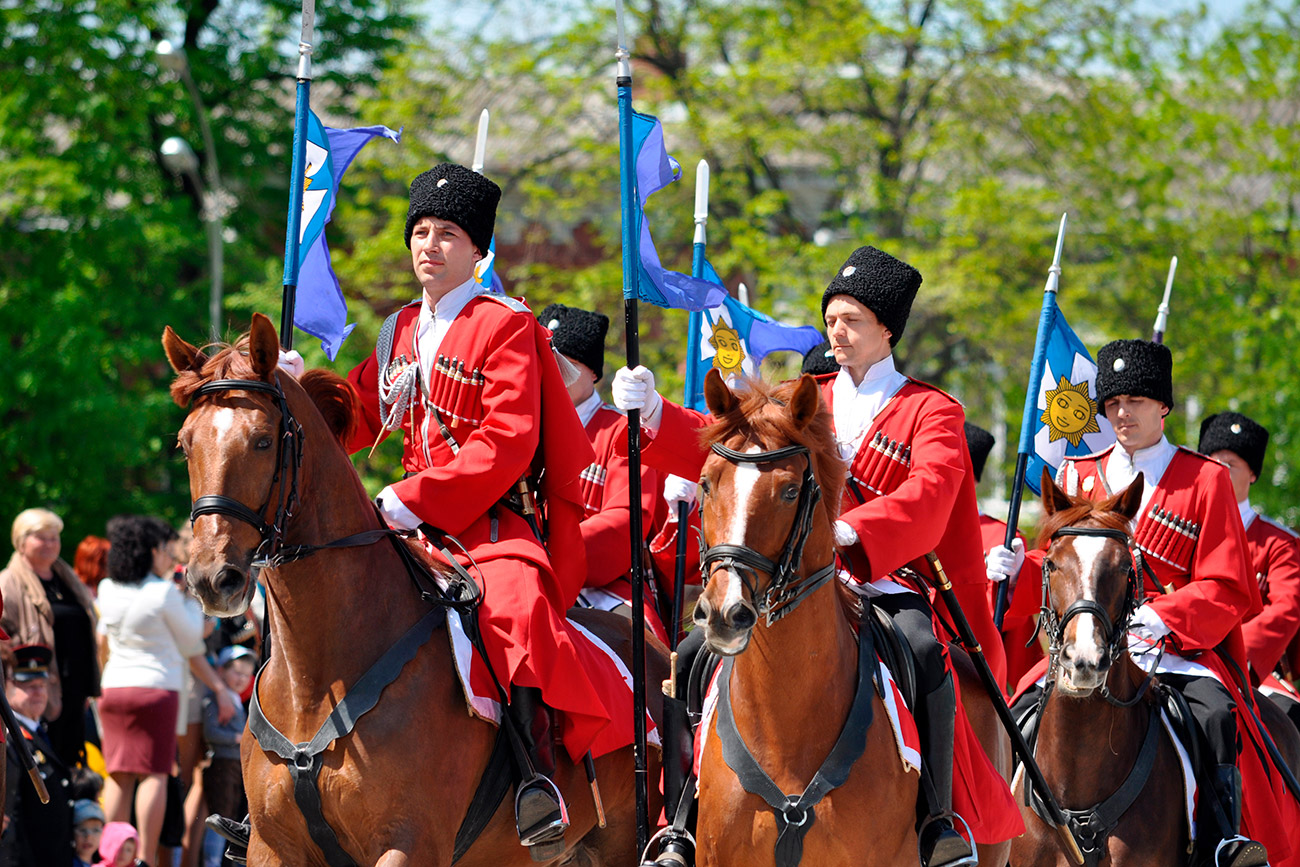
For five years in a row this southern city has topped the ranking of Russia's best places to live, and it is not surprising. Krasnodar’s main street is so green that walking along it feels like a stroll in the park, local eco-friendly food is served on tables in restaurants, and a high-speed train will take you to the Black Sea coast in just 2 hours.
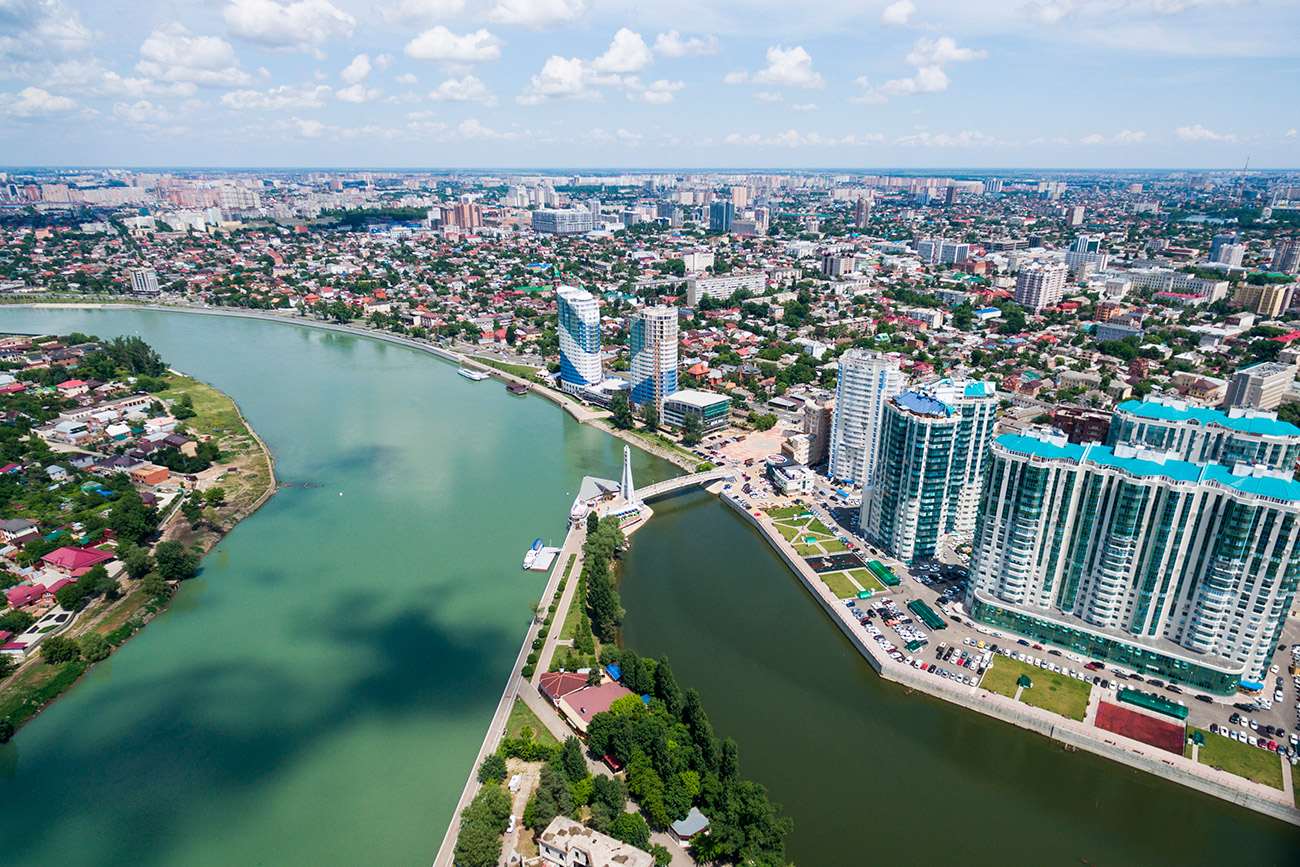 RIA Novosti/Vitaly Timkiv
RIA Novosti/Vitaly Timkiv
I usually visit new Russian cities by taking the train. This time, it’s Krasnodar, the unofficial capital of the Russian south, about 1,300 kilometers from Moscow. My comfortable double-decker train from Moscow arrives, after 19 hours, at 5:30 a.m. I’m shocked: it’s already + 28 Celsius and the sun is rising. Summer in Krasnodar is so long that even September is warmer than May.
Next to the train station I see a small Lenin statue surrounded by minibuses, as well as their drivers and passengers. Apart from that, the streets are empty. The small houses along the main streets hide themselves behind big fences and vine tendrils, just like in the south of Europe.
More than 830,000 residents live in Krasnodar, but at 6 a.m. you will hardly see even one of them. The city is quite young; founded in 1793, but the settlement only obtained official city status in 1867, exactly 150 years ago.
The street signs sometimes mention a place called Yekaterinodar. That’s the old name of Krasnodar, which means ‘gift of Catherine.’ Actually, two Catherines decided the city’s fate: Catherine the Great gave the land to the local Cossacks to build a fortress. And St. Catherine of Alexandria is the patron saint of the city. In 1930, Stalin tried to erase all memory of the city's imperial past, so Yekaterinodar became Krasnodar – ‘a red gift.’
Nevertheless, Krasnodar retains memories of its historical past. Instead of English, the street signs are doubled with their pre-Soviet names. Lenin Street used to be Sobornaya (Cathedral) Street, and Sovetskaya Street was called Grafskaya (Palatine).
 Legion-Media
Legion-Media
For centuries Yekaterinodar was the military headquarters of the Kuban Cossacks. After the Russian-Turkish and Russian-Polish wars in the 18th century, the Black Sea Cossacks were granted their own lands in the Kuban region by Catherine the Great, where they founded a military fortress and their own capital. It was considered as a gift of honor for their help on the battlefield.
After the revolution in 1917 the Cossacks set up their own republic in Kuban, but in the 1920s they were deported by the communist government, which viewed them as a threat. Many also died of starvation in the Soviet famine of 1932–33. Only later in the 1930s did the repression stop, and soon after the Cossack organizations began anew.
Today, the Cossacks are still classified as an armed organization, but more often they present themselves as keepers of old traditions. They've opened museums, and they dance and sing at every major traditional festival. Also, the Kuban Cossack Choir tours the world.
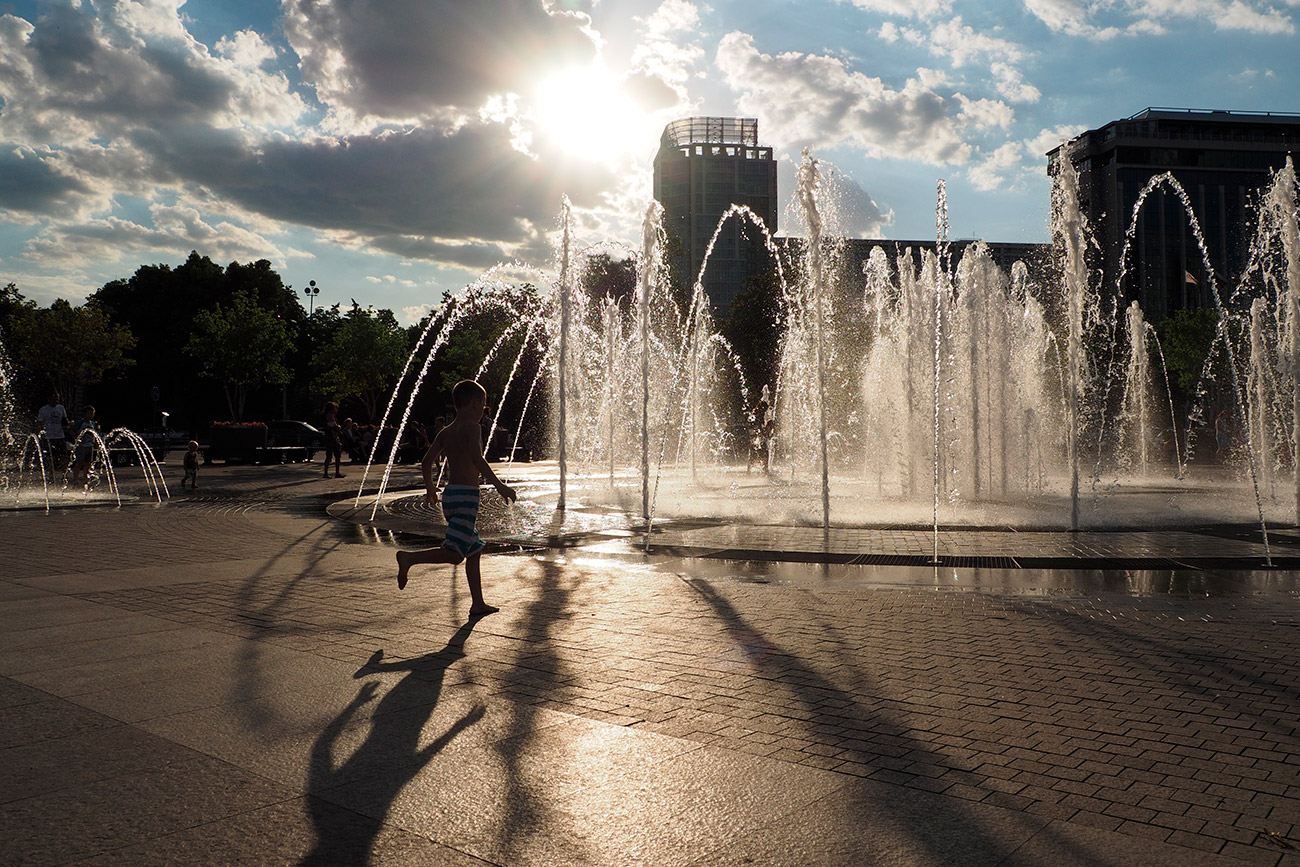 RIA Novosti/Vitaly Timkiv
RIA Novosti/Vitaly Timkiv
Walking through Krasnodar today you won’t meet many Cossacks, but you will see a lot of small sculptures, friendly people in shorts, summer dresses and a light smile on their lips. I suppose it’s because of the weather. While in Moscow we have about 1,730 average sun hours per year, Krasnodar enjoys more than 2,100. A good reason to smile, isn’t it?
There's a surprise in the city center around Krasnaya Street and Zhukov Square. While you will recognize a monumental post-Soviet colorful mosaic on the left, there's one bourgeois town villa after another on the right. Neo-classicism, Art Nouveau, and many more early 20th century Western Europe architecture styles are delights for the eye.
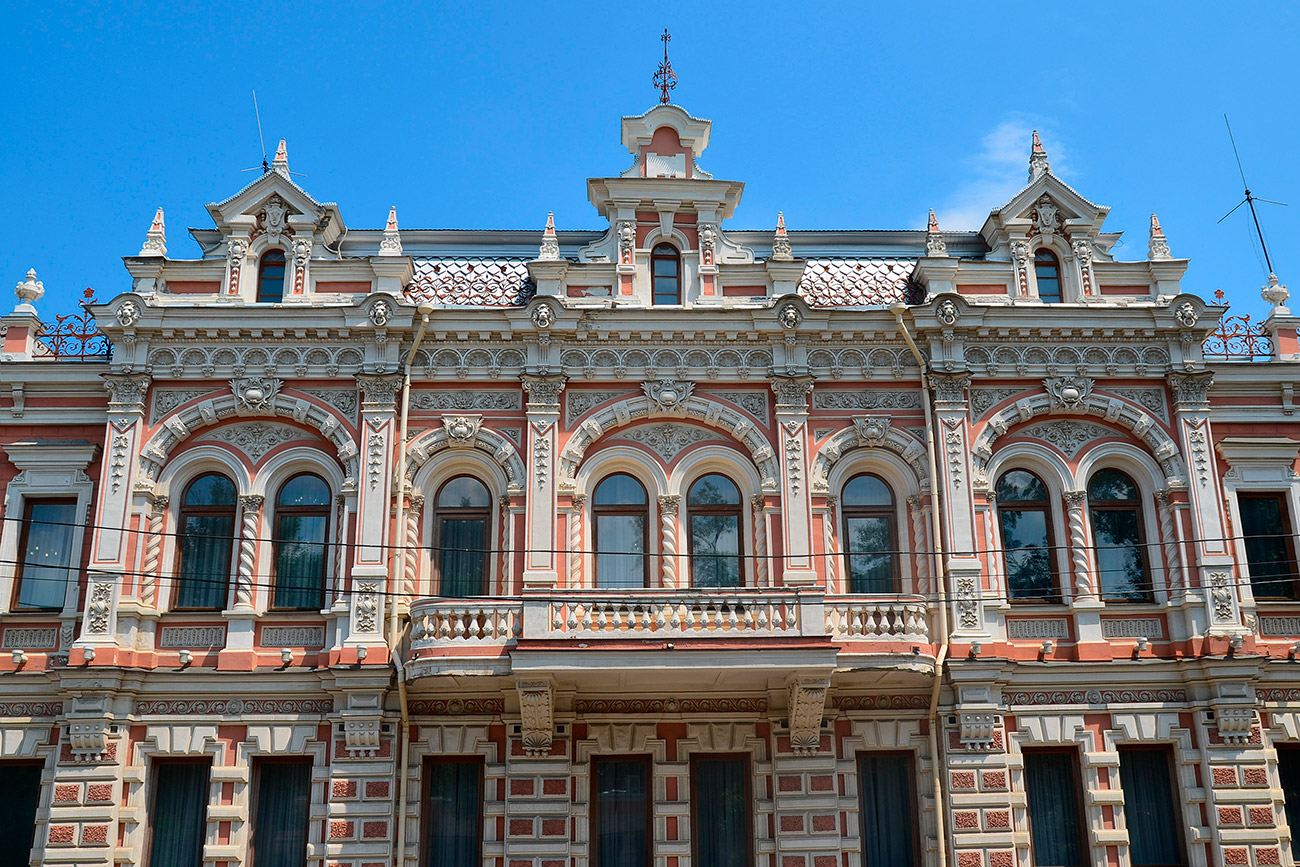 Peggy Lohse
Peggy Lohse
I head on to the Krasnodar Memorial Museum, founded in 1879 by Evgeny Felicyn, a local Cossack military, scientist, historian who was dedicated to social causes. Except for the exhibit, you should check out the surprisingly rich décor inside the Bogarsukov villa, where the museum has been located since the early 1960s. And do not lose sight of the ceiling! There you’ll find Caucasian scenes from the steppe, as well as gold and silver ornaments á la Vienna.
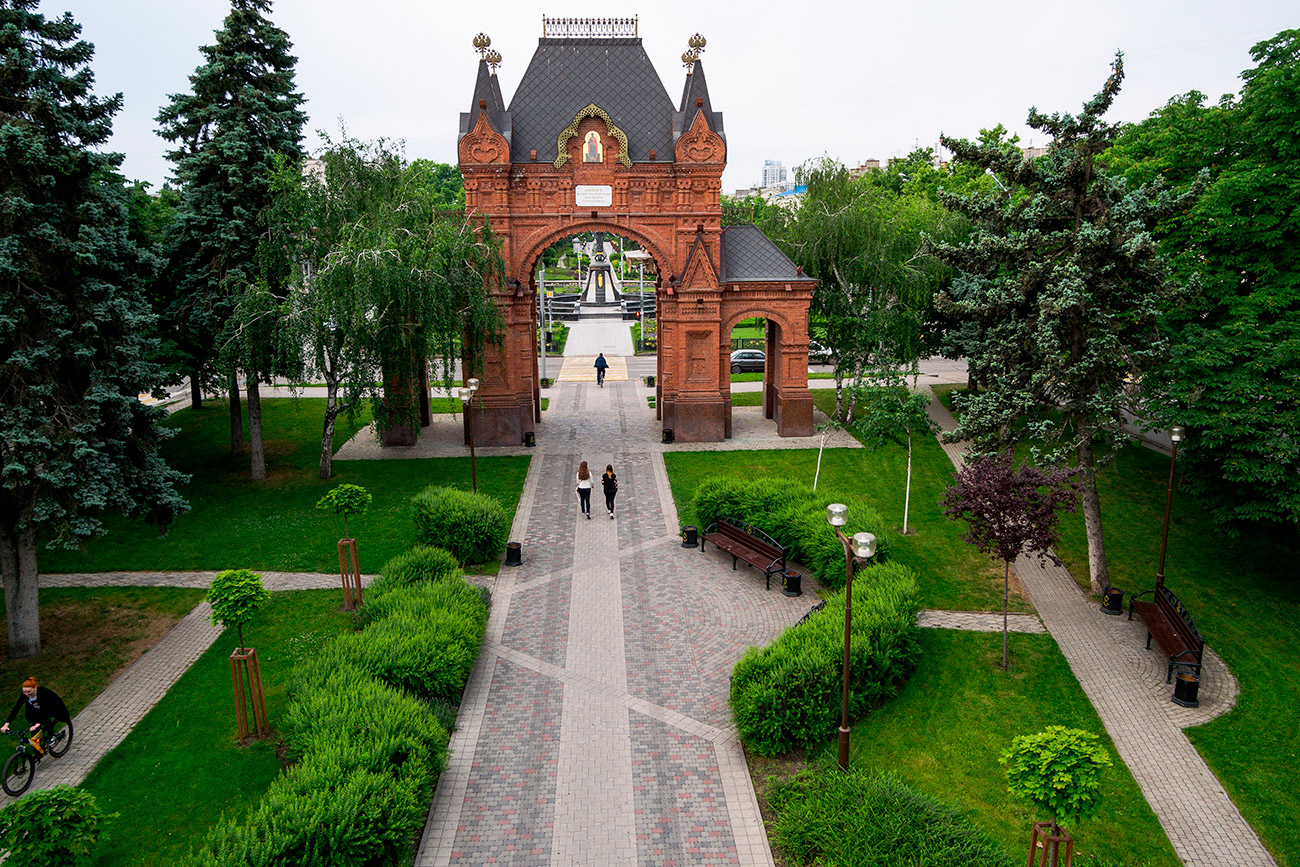 RIA Novosti/Vitaly Timkiv
RIA Novosti/Vitaly Timkiv
Where else to go in Krasnodar? Locals have a clear answer: walking along Krasnaya Street, which crosses the entire city center and passes almost all important sights, including the statue of Catherine the Great and the local Triumphal Arch. A long green stripe leads to the city theater and a square with a monumental Kuban flag.
Close to the middle of Krasnaya Street I need a rest, a coffee and a snack. No problem, there are dozens of cafes. My personal tip: try the Guryevskaya kasha in the southern Russian coffeehouse chain ‘Khlebnye istorii’. This is not what you often find on a menu, and it’s tasty and healthy.
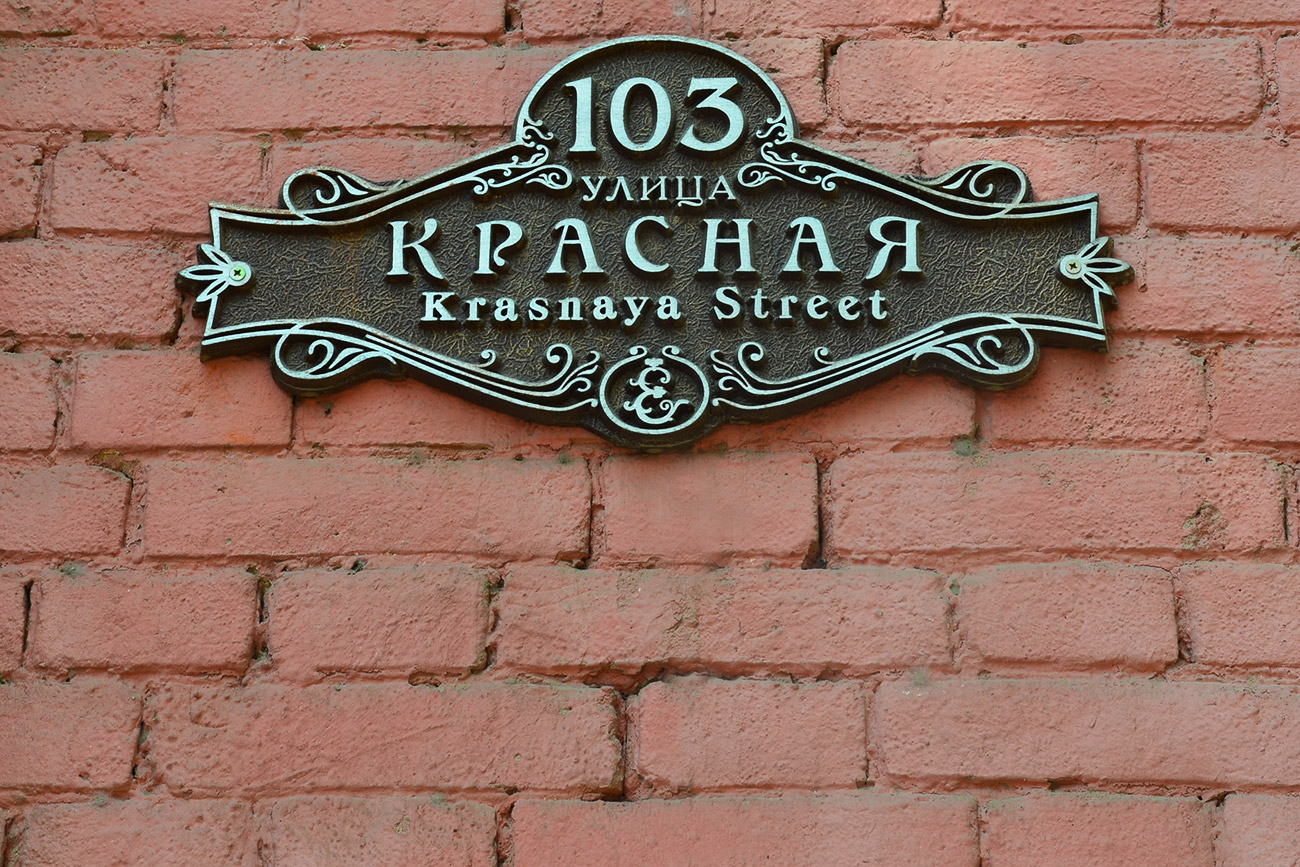 Peggy Lohse
Peggy Lohse
Now, the lower part of Krasnaya invites you on intensive shopping tours, and will surprise you on the weekend. On Friday evenings starting at 8 p.m. the street is closed for cars and public transportation to give pedestrians, joggers, bikers, skaters, musicians, artists and all the people without a car more space to enjoy the weekend.
Walking along the opposite side of Krasnaya Street, you make a circle and reach the route’s starting point through the city’s heart – the Catherine Garden. The old trees remember Krasnodar’s Cossack leader, whose house used to stand across the road in the 19th century – locals believe the young city once started from this place 150 years ago.
If using any of Russia Beyond's content, partly or in full, always provide an active hyperlink to the original material.
Subscribe
to our newsletter!
Get the week's best stories straight to your inbox